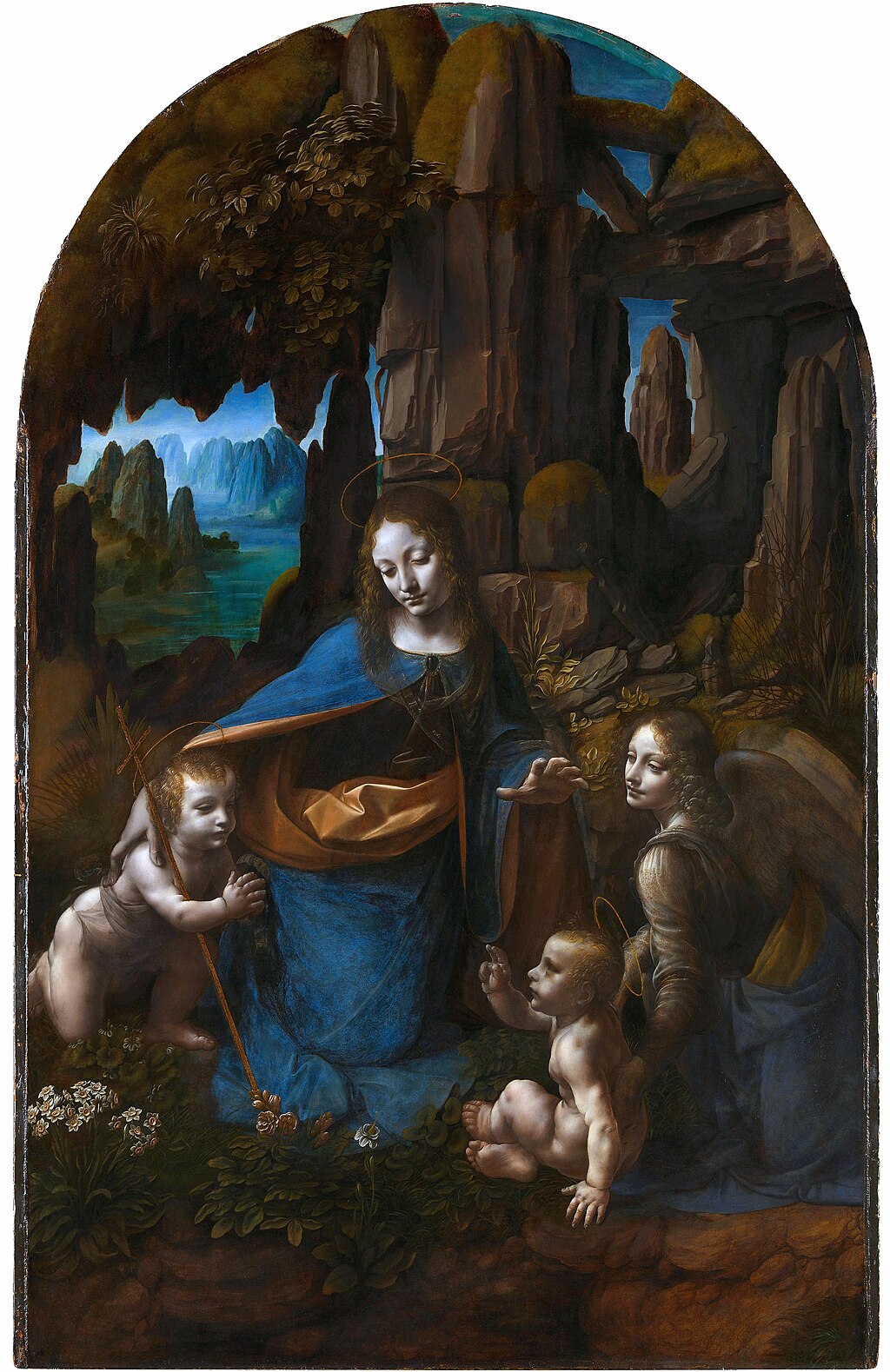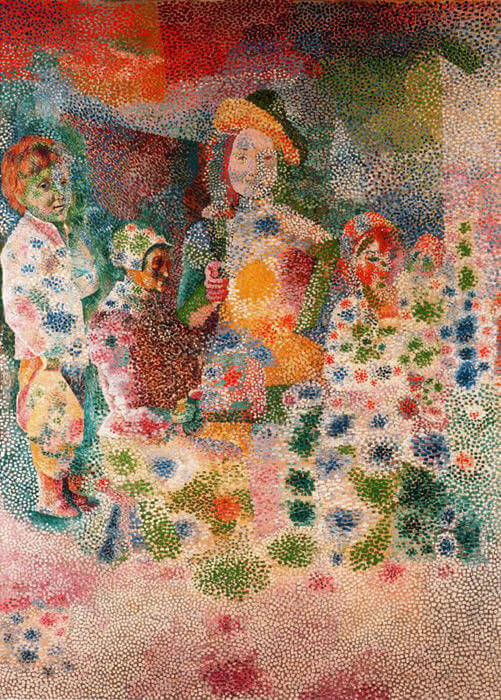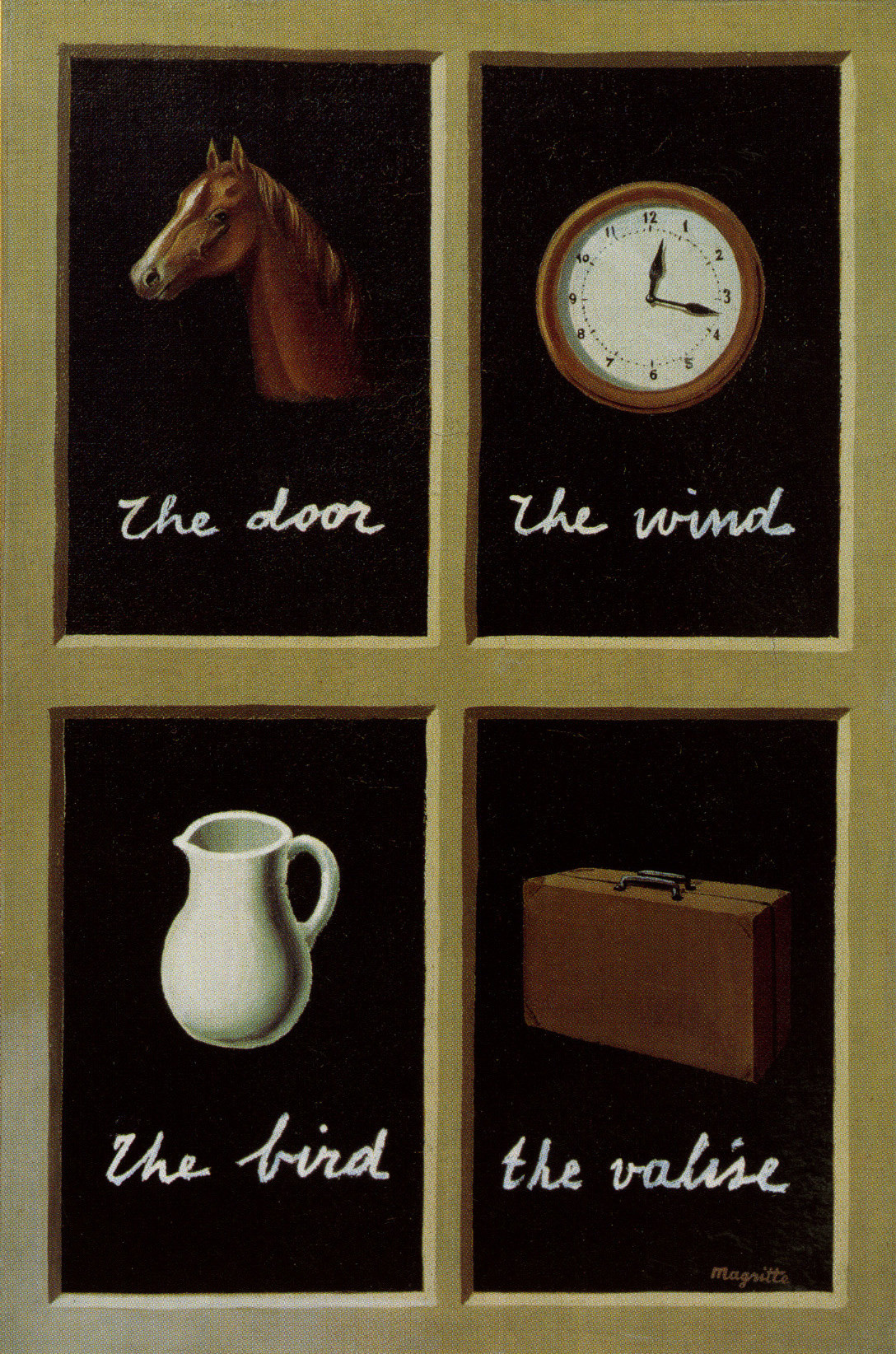
Brussels, 4 October 1936, Charly Herscovici Collection, Brussels

Marcel Duchamp: The Creative Act
A paper presented to the convention of the American Federation of Arts in Houston, Texas, April 1957
https://ubu.com/sound/duchamp_var.html
Marcel Duchamp: A teremtő aktus
Médiatörténeti szöveggyűjtemény 2011: 101. oldal: https://mek.oszk.hu/19500/19557/19557.pdf
“Összegezve, a művész nem az egyetlen, aki a teremtő aktust véghezviszi: ugyanis a néző hozza létre a mű kapcsolatát a
külvilággal, amennyiben a mű mélyebben fekvő tulajdonságait megfejti és értelmezi, és ezáltal létrehozza a maga hozzájárulását
a teremtő folyamathoz. Ez a hozzájárulás még nyilvánvalóbb, amikor az utókor hozza meg a végleges ítéletét, elfelejtett műveket
rehabilitálva.”

We only see what we look at. To look is an act of choice.


https://artsandculture.google.com/project/vermeer
Discover hidden details: https://artsandculture.google.com/story/EgWhZq9BgDmEJQ
Cartography: https://artsandculture.google.com/story/XQWBOBoqo-TBKQ
Pearls:https://artsandculture.google.com/story/LAXh0Fkfg9m6Lg
Painting technique: https://artsandculture.google.com/story/FQWxsWA3Td8pIw
Vermeer Pilgrimage: https://artsandculture.google.com/story/IgUxgojxRoDZJw




The two versions of Leonardo’s “Virgin of the Rocks” showcase subtle yet significant differences that distinguish them, offering fascinating insights into the artist’s creative process and the circumstances surrounding their creation.
The Louvre version, widely considered the earlier work, is notable for its delicate use of sfumato, a technique Leonardo pioneered, creating a soft, hazy atmosphere that envelops the figures. This ethereal quality contributes to the painting’s overall sense of mystery and spiritual depth. In contrast, the London version employs a brighter, more dramatic lighting scheme, resulting in sharper outlines and greater clarity of detail. This enhances the figures’ three-dimensionality and brings a heightened sense of realism to the scene.
Symbolic elements also play a crucial role in differentiating the two paintings. The London version, potentially influenced by the desires of the commissioning patrons or later additions, incorporates traditional religious iconography absent from the Louvre version. These include halos encircling the heads of the Virgin Mary and the infant Jesus, as well as a miniature cross held by the young John the Baptist. These additions underscore the religious significance of the scene and enhance its devotional character.
Furthermore, subtle compositional variations distinguish the two works. The angel’s gesture in the Louvre version is more pronounced, with an extended index finger seemingly pointing towards John the Baptist. This accentuates John’s importance within the narrative, possibly alluding to his future role as the herald of Christ. In the London version, the angel’s hand rests on its knee, creating a more contemplative and introspective impression.
Finally, questions surrounding attribution further differentiate the two paintings. The Louvre version is widely accepted as entirely by Leonardo’s hand, while there is ongoing debate about the extent of workshop assistance in the London version. This distinction highlights the complexities of Leonardo’s studio practice and the challenges of attributing works to a single artist in a collaborative environment.
In conclusion, while both versions of “Virgin of the Rocks” depict the same biblical scene, they diverge in significant ways. The Louvre version embodies a more atmospheric and enigmatic quality, while the London version embraces clarity and religious symbolism. These differences, while subtle, illuminate Leonardo’s artistic evolution and the dynamic interplay between artistic vision and external influences.





Iconography and iconology are two interrelated but distinct approaches to analyzing the meaning and significance of visual imagery, particularly within the realm of art history.
Iconography:
- Focus: Primarily concerned with the identification, description, and classification of the visual elements within an artwork.
- Methodology: Involves recognizing and interpreting specific symbols, motifs, attributes, and allegorical figures depicted in the work.
- Goal: To establish a comprehensive understanding of the subject matter and its representation based on established conventions and historical context.
Iconology:
- Focus: Goes beyond the literal identification of visual elements to delve into their deeper cultural, social, and historical significance.
- Methodology: Involves a broader interdisciplinary approach, drawing on knowledge from various fields like literature, mythology, philosophy, and religion to uncover the underlying meaning and cultural context of the artwork.
- Goal: To interpret the artwork’s intended message and its relationship to the broader intellectual and cultural climate of its time.
Key Differences:
- Level of Analysis: Iconography operates on a more descriptive and literal level, while iconology engages in a deeper interpretive and contextual analysis.
- Methodology: Iconography primarily relies on visual analysis and historical knowledge, while iconology employs a broader range of interdisciplinary tools and approaches.
- Focus: Iconography concentrates on identifying and understanding individual symbols and motifs, while iconology seeks to synthesize these elements into a coherent interpretation of the artwork’s overall meaning and significance.
Relationship:
Iconography and iconology are often seen as complementary approaches, with iconography providing the foundational knowledge necessary for iconological interpretation. In essence, iconography lays the groundwork for understanding what is depicted in an artwork, while iconology strives to uncover why it was depicted and what it meant to its creator and audience.
Example:
Consider a painting of a woman holding a pomegranate.
- Iconography: Would identify the fruit as a pomegranate and the woman as Persephone or Proserpina, based on established visual attributes.
- Iconology: Would delve deeper into the symbolism of the pomegranate, its association with fertility, death, and rebirth, and explore how the painting reflects broader cultural anxieties about the changing seasons or the cycle of life and death.
Both iconography and iconology are valuable tools for understanding the rich and complex meanings embedded in artworks. While they operate at different levels of analysis, their combined insights allow us to appreciate the full depth and significance of visual representations across cultures and historical periods.
Hermeneutics:
Let’s explore the relationship between iconography/iconology and hermeneutics.
Common Ground:
Both iconography/iconology and hermeneutics share a core concern with interpretation and meaning-making in relation to visual imagery or texts. They acknowledge that the meaning of a work is not self-evident but requires active engagement and interpretation by the viewer or reader.
Differences in Focus:
- Iconography/Iconology: Primarily focuses on deciphering the specific visual elements, symbols, and motifs present in an artwork to understand its subject matter and potential layers of meaning. It often utilizes historical and cultural context to aid in this process.
- Hermeneutics: Takes a broader perspective, exploring the overall interpretive process itself. It delves into the complexities of understanding and meaning-making, recognizing that interpretation is influenced by the viewer/reader’s own cultural and historical background, as well as the context in which the work is encountered.
Complementary Approaches:
- Iconography/Iconology provides the tools and knowledge to identify and understand the visual language and symbolic content within an artwork. This serves as a crucial foundation for deeper hermeneutic exploration.
- Hermeneutics, in turn, offers a framework for understanding how individuals engage with and interpret the artwork’s symbolism and meaning, recognizing the subjective and dynamic nature of the interpretive process.
Integration:
- The combination of these approaches enables a richer and more nuanced understanding of artwork. Iconography/iconology helps us decipher the “text” of the artwork, while hermeneutics explores the “reading” of that text by individuals and cultures.
- By applying hermeneutical principles to the iconographic/iconological analysis, we can move beyond a purely descriptive understanding of the artwork’s symbols and delve into the complexities of how those symbols resonate with viewers across time and space.
In Summary:
Iconography/iconology and hermeneutics are complementary approaches to understanding the meaning and significance of visual imagery. While iconography/iconology focuses on deciphering the specific visual elements, hermeneutics offers a framework for understanding the broader process of interpretation and the subjective nature of meaning-making. Together, they provide a powerful toolkit for unlocking the rich and multifaceted layers of meaning embedded within artworks.
Reception aesthetics:
Reception aesthetics, a theoretical framework emphasizing the active role of the viewer in creating meaning, has significantly impacted the discipline of art history. It challenges traditional approaches centered on the artist’s intent or the formal qualities of the artwork by highlighting the importance of the audience’s interpretation.
By acknowledging the viewer as a co-creator of meaning, reception aesthetics recognizes that an artwork’s significance is not fixed but rather evolves through its interaction with diverse audiences across time and cultures. This paradigm shift has prompted art historians to consider the broader context of reception, exploring how artworks are received, understood, and reinterpreted within specific social, cultural, and historical frameworks.
Incorporating reception aesthetics has led to a more nuanced understanding of artistic significance and influence. By examining the diverse responses and interpretations generated by artworks, scholars gain insights into their impact on audiences, the evolution of their meaning over time, and their enduring cultural relevance.
Reception aesthetics also contributes to a more inclusive and democratic approach to art history. By recognizing the validity of multiple interpretations, it empowers viewers to actively engage with artworks and contribute to the ongoing dialogue about their meaning and value.
In essence, reception aesthetics has expanded the scope of art historical inquiry beyond the artwork itself, emphasizing the dynamic and multifaceted relationship between artwork, viewer, and context. By acknowledging the viewer’s active role in the creation of meaning, this paradigm enriches our understanding of how art operates within the world, fostering a more inclusive and dynamic appreciation of its significance and impact.


by Picasso, 114×81 cm
Many artist intentionally refer to other masterpieces, often historical ones, like Picasso for example.







Marcel Duchamp’s “The Creative Act” presents a radical perspective on artistic creation and appreciation, emphasizing the role of intuition and the spectator’s interpretation. This essay finds intriguing parallels with Hans-Georg Gadamer’s philosophical hermeneutics, particularly in their shared emphasis on the active role of the interpreter in meaning-making.
Both Duchamp and Gadamer challenge traditional notions of authorship. Duchamp likens the artist to a medium, suggesting that the creative process is not entirely conscious. This aligns with Gadamer’s rejection of authorial intent as the sole determinant of meaning. Both emphasize the interpreter’s agency, highlighting the dynamic encounter between artwork and spectator (or text and reader) as the locus of meaning.
Duchamp’s concept of the “art coefficient,” measuring the gap between artistic intention and spectator interpretation, resonates with Gadamer’s “fusion of horizons,” where meaning emerges from the dialogue between the artwork and the interpreter’s historical and cultural context. Both acknowledge the subjective nature of interpretation, recognizing that meaning is not fixed but evolves through ongoing engagement.
Duchamp’s assertion that the spectator completes the artistic act echoes Gadamer’s view that the artwork is open to multiple interpretations. For both, the act of interpretation is an ongoing dialogue, generating new meanings over time. This dynamic understanding challenges the notion of a singular, definitive interpretation, recognizing the plurality of perspectives and the evolving nature of artistic and textual meaning.
In conclusion, while Duchamp and Gadamer approach the question of meaning from different disciplines, their ideas converge on the importance of the interpreter’s active participation. Both challenge traditional notions of authorship and fixed meaning, emphasizing the dynamic and interactive nature of interpretation. This shared perspective offers valuable insights into the ongoing relevance and evolving interpretations of art and other cultural artifacts.

René Magritte’s painting “The Key of Dreams” serves as a prime example of the dynamic interplay between artist, artwork, and spectator that both Duchamp and Gadamer emphasize. The painting features four panels, each depicting an everyday object with a seemingly unrelated word, such as a horse labeled “the door” or a valise labeled “the wind.” This deliberate mismatch challenges the conventional relationship between language and representation, creating an enigmatic visual puzzle.
From Duchamp’s perspective, the painting itself is not a finished product but a catalyst for the viewer’s interpretation. The true meaning of the artwork lies in the gap between the artist’s intention and the viewer’s response, the “art coefficient” as Duchamp calls it.
Gadamer’s hermeneutics further emphasizes the active role of the viewer. Each individual brings their own unique experiences and cultural background to the interpretation of “The Key of Dreams.” The painting becomes a conversation between the artist and the viewer, where meaning is created through the interplay of individual perspectives. The disjunction between image and text prompts the viewer to question their preconceived notions about language and reality, opening up new avenues for understanding.
In the context of “The Key of Dreams,” the viewer is not a passive recipient of the artwork but an active participant in its creation. The painting’s enigmatic nature invites multiple interpretations, challenging the viewer to engage with the artwork on a personal level. This active participation, both Duchamp and Gadamer argue, is essential for a meaningful artistic experience.
https://www.ways-of-seeing.com
https://monoskop.org/images/9/9e/Berger_John_Ways_of_Seeing.pdf